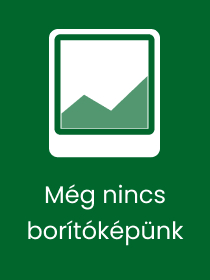
Ornamental Origami
Exploring 3D Geometric Designs
Sorozatcím: AK Peters/CRC Recreational Mathematics Series;
-
20% KEDVEZMÉNY?
- A kedvezmény csak az 'Értesítés a kedvenc témákról' hírlevelünk címzettjeinek rendeléseire érvényes.
- Kiadói listaár GBP 29.99
-
14 327 Ft (13 645 Ft + 5% áfa)
Az ár azért becsült, mert a rendelés pillanatában nem lehet pontosan tudni, hogy a beérkezéskor milyen lesz a forint árfolyama az adott termék eredeti devizájához képest. Ha a forint romlana, kissé többet, ha javulna, kissé kevesebbet kell majd fizetnie.
- Kedvezmény(ek) 20% (cc. 2 865 Ft off)
- Kedvezményes ár 11 462 Ft (10 916 Ft + 5% áfa)
Iratkozzon fel most és részesüljön kedvezőbb árainkból!
Feliratkozom
14 327 Ft

Beszerezhetőség
Becsült beszerzési idő: A Prosperónál jelenleg nincsen raktáron, de a kiadónál igen. Beszerzés kb. 3-5 hét..
A Prosperónál jelenleg nincsen raktáron.
Why don't you give exact delivery time?
A beszerzés időigényét az eddigi tapasztalatokra alapozva adjuk meg. Azért becsült, mert a terméket külföldről hozzuk be, így a kiadó kiszolgálásának pillanatnyi gyorsaságától is függ. A megadottnál gyorsabb és lassabb szállítás is elképzelhető, de mindent megteszünk, hogy Ön a lehető leghamarabb jusson hozzá a termékhez.
A termék adatai:
- Kiadás sorszáma 1
- Kiadó A K Peters
- Megjelenés dátuma 2008. november 21.
- ISBN 9781568814452
- Kötéstípus Puhakötés
- Terjedelem155 oldal
- Méret 280x210 mm
- Súly 420 g
- Nyelv angol
- Illusztrációk Approx 30 pages replaced - Peters files 0
Kategóriák
Rövid leírás:
This book is a great resource for people who enjoy polyhedra, symmetry, geometry, mathematics and origami. The reader can learn about polyhedra while making these models and is left with the ability to design one's own models. Step-by-step folding instructions for over 40 models are presented. Although the book is for intermediate folders, beginners are encouraged to try because origami basics are explained. The diagrams are easy to follow and each model is accompanied by breathtaking finished model photographs.
TöbbHosszú leírás:
This book is a great resource for people who enjoy polyhedra, symmetry, geometry, mathematics and origami. The types of models presented are similar in nature to the models in Mukerji's Marvelous Modular Origami, but some of the chapters are more advanced and all of the designs are new. The reader can learn about polyhedra while making these models and is left with the ability to design one's own models.
Step-by-step folding instructions for over 40 models are presented. Although the book is for intermediate folders, beginners are encouraged to try because origami basics are explained. The diagrams are easy to follow and each model is accompanied by breathtaking finished model photographs.
Ornamental Origami is Meenakshi Mukerji’s second book on modular origami. Those of you who are familiar with her first book will find that this second installment to be just as well organized with a slew of new origami models.
—Origami Resource Center, 2011
Opening Ornamental Origami by Meenakshi Mukerji gives me a pleasurable feeling. The glossy paper pages with their colorful photographs that alternate with step-by-step how-to directions entice me to pick up paper squares right away and start folding. In this second book by Mukerji there are 40 more clever, geometric, modular origami models for paperfolding enthusiasts.
—Florence Temko, February 2009
This is another excellent book by one of the rigami community’s highly-creative authors . . . and, just as with her first book, anyone looking to start out in decorative modular folding will also find this book a great resource.
—Anne LaVin's Origami Blog, February 2009
Ornamental Origami is a wonderful book for both math and origami lovers alike. . . . the author provides wonderful, clear descriptions and beautiful photographs. Another interesting aspect of the book is the afterward: a small collection of mathematical exercises related to folding paper. The problems were thought-provoking and again bridged the gap between math and origami.
—MAA Reviews, March 2009
Using color extensively in both diagrams and photographs, [Mukerji] walks readers through the elaborate constructions and illustrates the final pieces.
—Book News, May 2009
Meenakshi Mukerji’s book is essentially a study of polyhedra but in a way that brings out the symmetry in subtle ways. . . . It builds up very complicated results from simple modules so that even a beginner in origami can follow and learn about polyhedral symmetry by assembling them. It should definitely find a place in school teaching or mathematics clubs.
—John Sharp, The London Mathematical Society Newsletter, May 2009
This book is an excellent contribution to the growing interest in and publications on origami, the art of paper folding. The author uses a special (construction) method called modular origami. That means she folds identical modules, called units which are assembled (on 'tabs' and 'pockets') to the final model. This method is also the content of the author's first book Marvelous Modular Origami which should be regarded as the basis of this new book. The author points out the underlying mathematics behind her origami. ... In marvelous coloured pictures, more than 40 modular origami models are shown with explicit instructions for the construction. ... The reader is invited to follow the passion of paper folding inspired by the beautiful examples in this book.
—Gertraud Ehrig, Zentralblatt MATH, September 2009
children can learn origami techniques to create beautiful and varied geometric shapes.
—Science News, November 2009
This book, for both beginners and experts, provides guidance in creating modular origami from the basic to the intricate, including planar origami models. The target audience includes artists, mathematicians, and students over twelve. ... The book's strengths include (1) explaining the symbols and terminology and (2) applying mathematics to the planar models. The diagrams in the book help users follow along. ... I recommend this book for math teachers who want to collaborate with art teachers.
—Colleen Eddy, Mathematics Teaching in the Middle School, January 2010
Tartalomjegyzék:
1 Modular Origami Basics, 2 Windmill Base Models (Created October 2006), 3 Blintz Base Bouquets (Created May 2004), 4 Decorative Icosahedra (Created 2006?2008), 5 Embellished Sonobes (Created 2006?2007), 6 Embellished Floral Balls (Created 2006?2008), 7 Planars (Created 2002?2003)
Több











